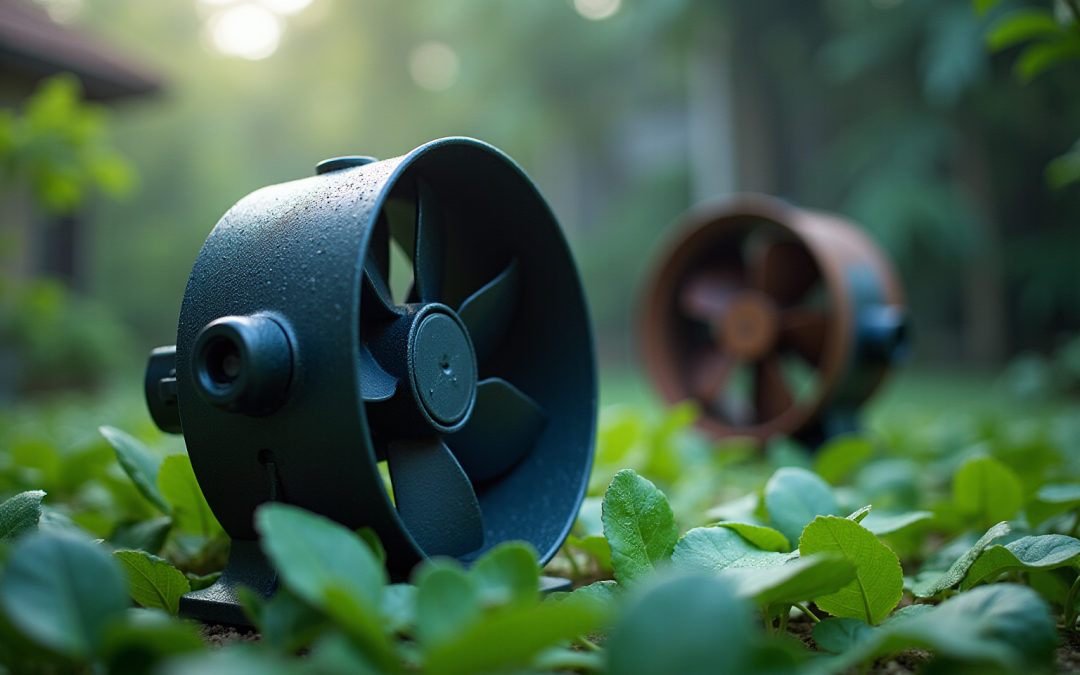Overview
The critical distinctions between water-resistant fans and standard fans underscore that water-resistant fans are meticulously engineered to operate efficiently in humid or outdoor settings, whereas standard fans are intended for dry, controlled environments. This article delineates that water-resistant fans provide superior durability and performance, attributed to their corrosion-resistant materials and sealed motors. Consequently, they emerge as a more dependable option for applications exposed to moisture, ultimately delivering enhanced long-term value despite their higher initial investment.
Introduction
Engineers encounter a pivotal decision when selecting fans for their projects: should they choose water-resistant fans or standard models? Given the escalating demand for reliable cooling solutions across various environments, it is crucial to comprehend the fundamental differences between these two fan types. This article explores the advantages of water-resistant fans, emphasizing their durability and efficiency in humid conditions, while also addressing the limitations inherent in standard fans.
How can engineers guarantee optimal performance in moisture-prone settings, and what long-term value do water-resistant fans genuinely provide?
Understand Water-Resistant vs. Standard Fans
The water resistant fans from Gagner-Toomey Associates are meticulously engineered to withstand humidity exposure and are frequently rated for specific environmental conditions, such as IP ratings. These devices are integral to an extensive product range that encompasses both standard and custom air-movers, all optimized for performance, efficiency, and low noise.
In contrast, typical units are generally not designed to handle moisture and may suffer from corrosion or malfunction when exposed to humid conditions. Gagner-Toomey’s water resistant fan units often feature sealed motors and corrosion-resistant materials, making them ideal for outdoor or high-humidity applications, while standard models are best suited for dry, controlled environments.
With a comprehensive portfolio of DC input Tube Axial ventilators and Centrifugal Blowers, Gagner-Toomey provides tailored for diverse applications in electronics, automotive, and industrial sectors.
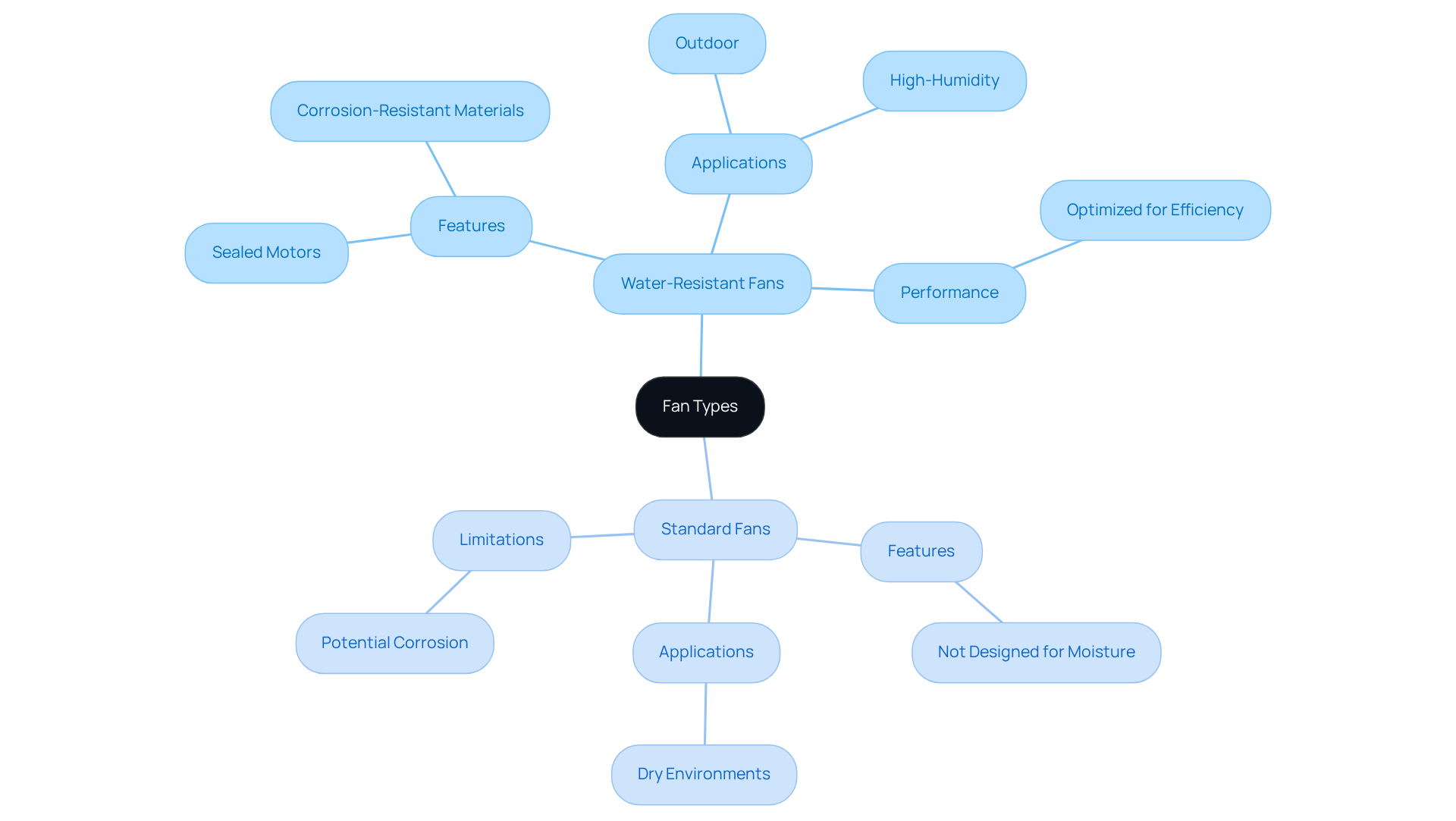
Explore the Advantages of Water-Resistant Fans
Water-resistant fans offer significant advantages, including:
- Enhanced durability
- A reduced likelihood of malfunction in humid conditions
- Superior performance in outdoor environments
These devices are designed as a water resistant fan to , thereby mitigating issues such as rust and short circuits. Furthermore, they often demonstrate improved airflow efficiency, which can enhance cooling capabilities in electronic systems. Their sturdy construction not only minimizes maintenance requirements over time but also positions them as a cost-effective solution for long-term utilization.
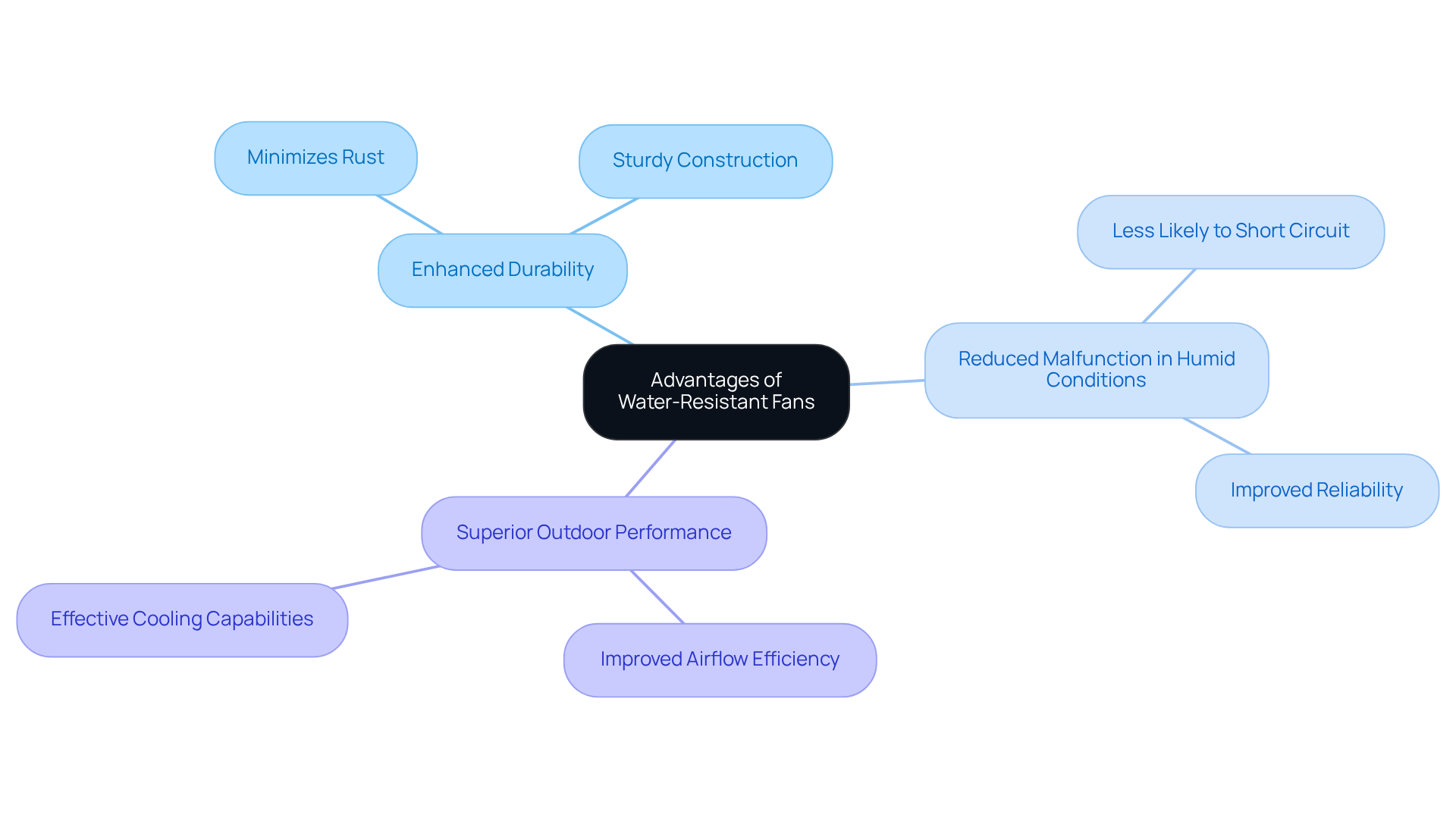
Evaluate the Limitations of Standard Fans
Standard devices face significant limitations, especially in environments characterized by high humidity or direct water exposure, making a water resistant fan a more suitable choice. These devices are susceptible to corrosion, which can precipitate mechanical failures and diminish their operational lifespan. Moreover, conventional ventilators often struggle to provide adequate airflow in damp conditions, as elevated humidity levels can impede their efficiency. This inefficiency may lead to , increasing the risk of system failures. Engineers must meticulously consider these constraints when designing systems, such as a water resistant fan, intended for environments prone to water exposure.
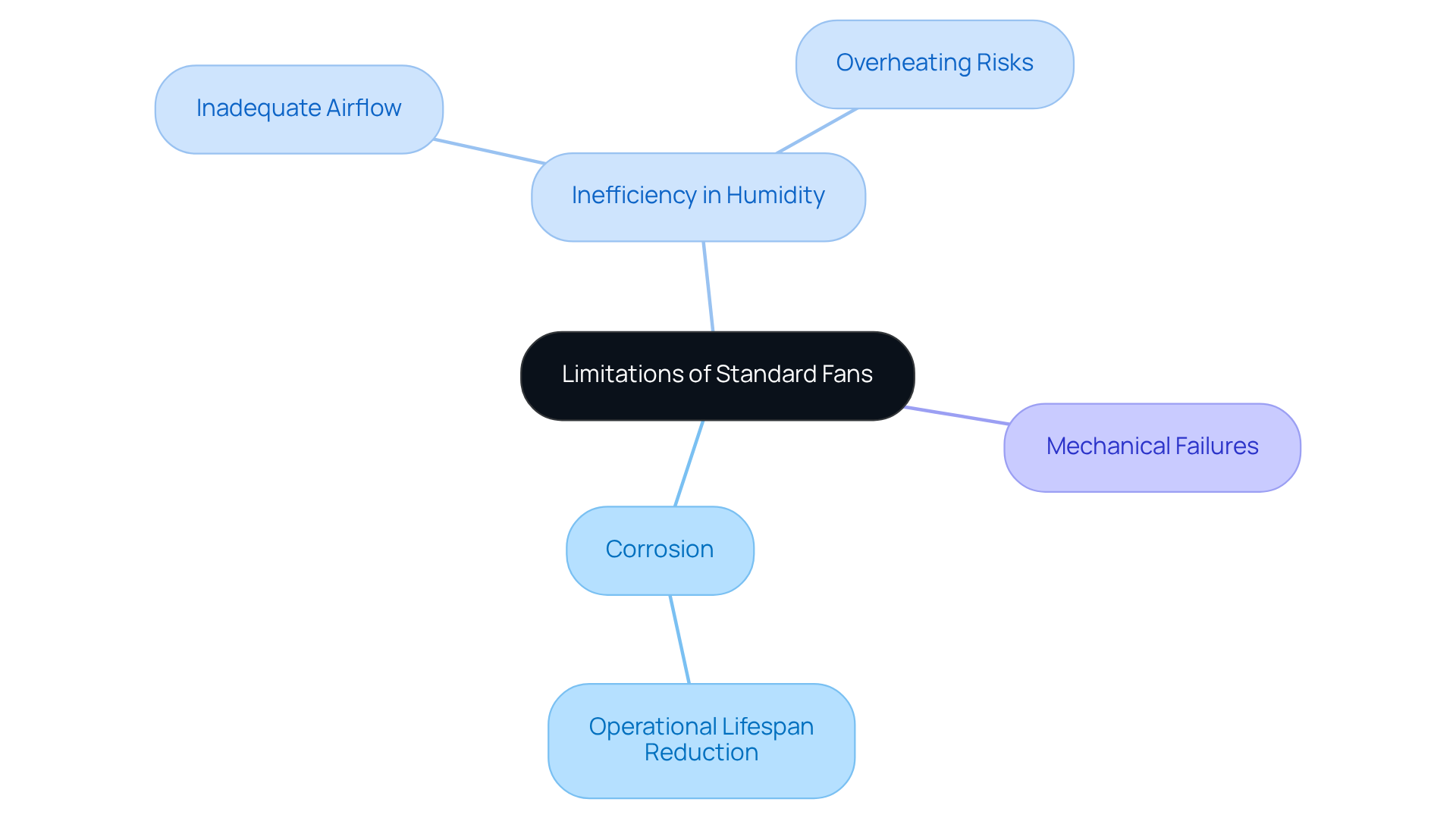
Compare Performance, Durability, and Suitability for Electronics
When evaluating performance, it is evident that the significantly outperforms standard models in humid or outdoor environments due to its robust construction and effective protection against moisture. These devices ensure consistent airflow and cooling efficiency, even under challenging conditions.
In terms of durability, water resistant fans are crafted from materials specifically designed to resist corrosion and wear, thereby greatly extending their operational lifespan compared to conventional models. Furthermore, a water resistant fan is ideally suited for applications in outdoor electronics, HVAC systems, and environments prone to moisture.
In contrast, standard models are best utilized in indoor, climate-controlled settings where humidity levels are managed effectively.
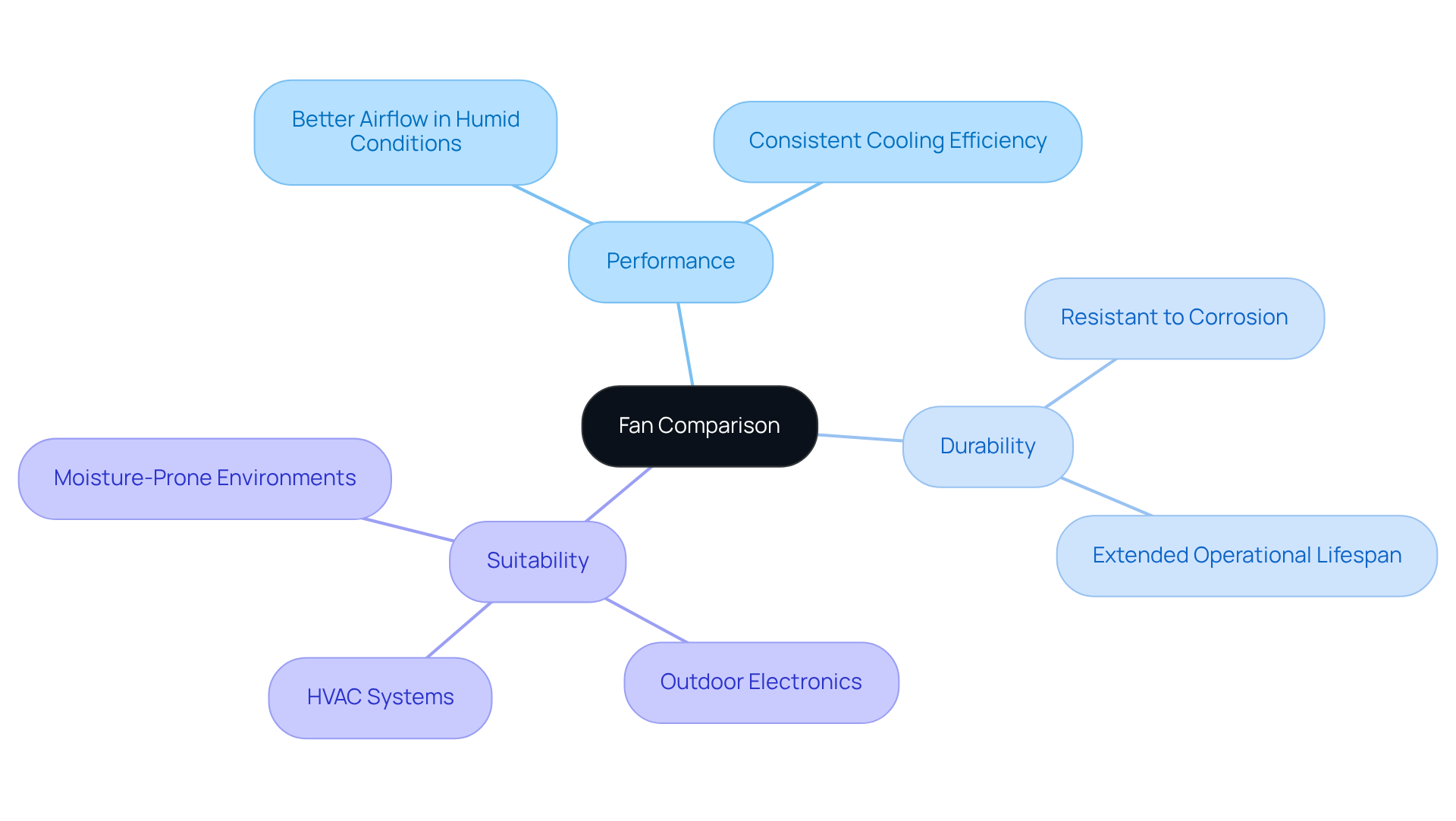
Consider Cost Implications and Long-Term Value
While water-resistant devices may incur a higher upfront expense compared to standard models, their frequently eclipses the initial investment. The durability and reduced maintenance needs of water-resistant devices can lead to substantial savings over time, particularly in environments where conventional models would require frequent replacements. Furthermore, the superior performance of a water-resistant fan can avert costly downtime and repairs linked to overheating or system failures in electronic applications. Engineers must weigh both the initial purchase price and the potential long-term savings when selecting the most suitable fan type.
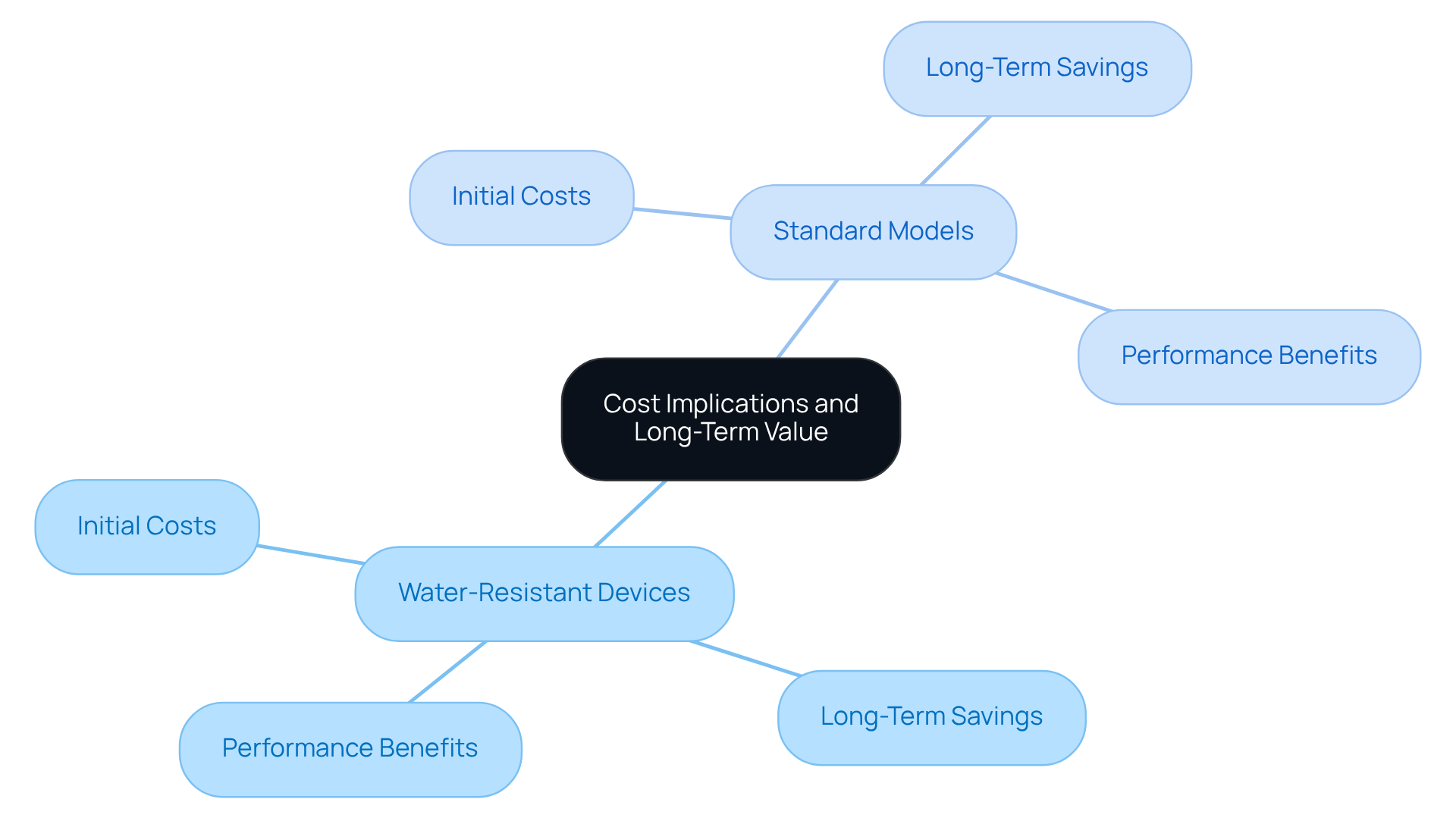
Conclusion
Understanding the distinction between water-resistant fans and standard fans is essential for engineers seeking reliable cooling solutions across diverse environments. Water-resistant fans are engineered to withstand humidity and moisture, making them indispensable for outdoor and high-humidity applications. In contrast, standard fans lack the necessary resilience for such conditions, often resulting in corrosion and mechanical failures.
This article highlights key advantages of water-resistant fans, including:
- Enhanced durability
- Superior performance in challenging conditions
- Long-term cost-effectiveness
These fans not only mitigate moisture-related risks but also ensure efficient airflow, crucial for protecting sensitive electronic components. Conversely, the limitations of standard fans in humid environments emphasize the necessity of selecting the appropriate fan type based on specific application needs.
Ultimately, the decision between a water-resistant fan and a standard fan should be guided by a thorough understanding of the operational environment and the long-term consequences of that choice. Engineers are urged to prioritize durability and performance, recognizing that investing in water-resistant technology can yield substantial savings and improved system reliability over time. By embracing the right solutions, operational efficiency can be enhanced, and critical equipment safeguarded, underscoring the importance of making informed decisions in fan selection.
Frequently Asked Questions
What is the difference between water-resistant fans and standard fans?
Water-resistant fans are engineered to withstand humidity and are often rated for specific environmental conditions, such as IP ratings. In contrast, standard fans are not designed for moisture exposure and may corrode or malfunction in humid conditions.
What features do water-resistant fans have?
Water-resistant fans typically feature sealed motors and corrosion-resistant materials, making them suitable for outdoor or high-humidity applications.
In what environments should standard fans be used?
Standard fans are best suited for dry, controlled environments where moisture exposure is minimal.
What types of products does Gagner-Toomey Associates offer?
Gagner-Toomey Associates offers a range of DC input Tube Axial ventilators and Centrifugal Blowers, providing innovative cooling solutions for electronics, automotive, and industrial sectors.
What are the advantages of using water-resistant fans?
The advantages of water-resistant fans include enhanced durability, a reduced likelihood of malfunction in humid conditions, and superior performance in outdoor environments.
How do water-resistant fans improve cooling capabilities?
Water-resistant fans are designed to operate effectively in moisture-laden settings, improving airflow efficiency and mitigating issues such as rust and short circuits, which enhances cooling capabilities in electronic systems.
Are water-resistant fans cost-effective in the long term?
Yes, water-resistant fans have sturdy construction that minimizes maintenance requirements over time, making them a cost-effective solution for long-term utilization.

